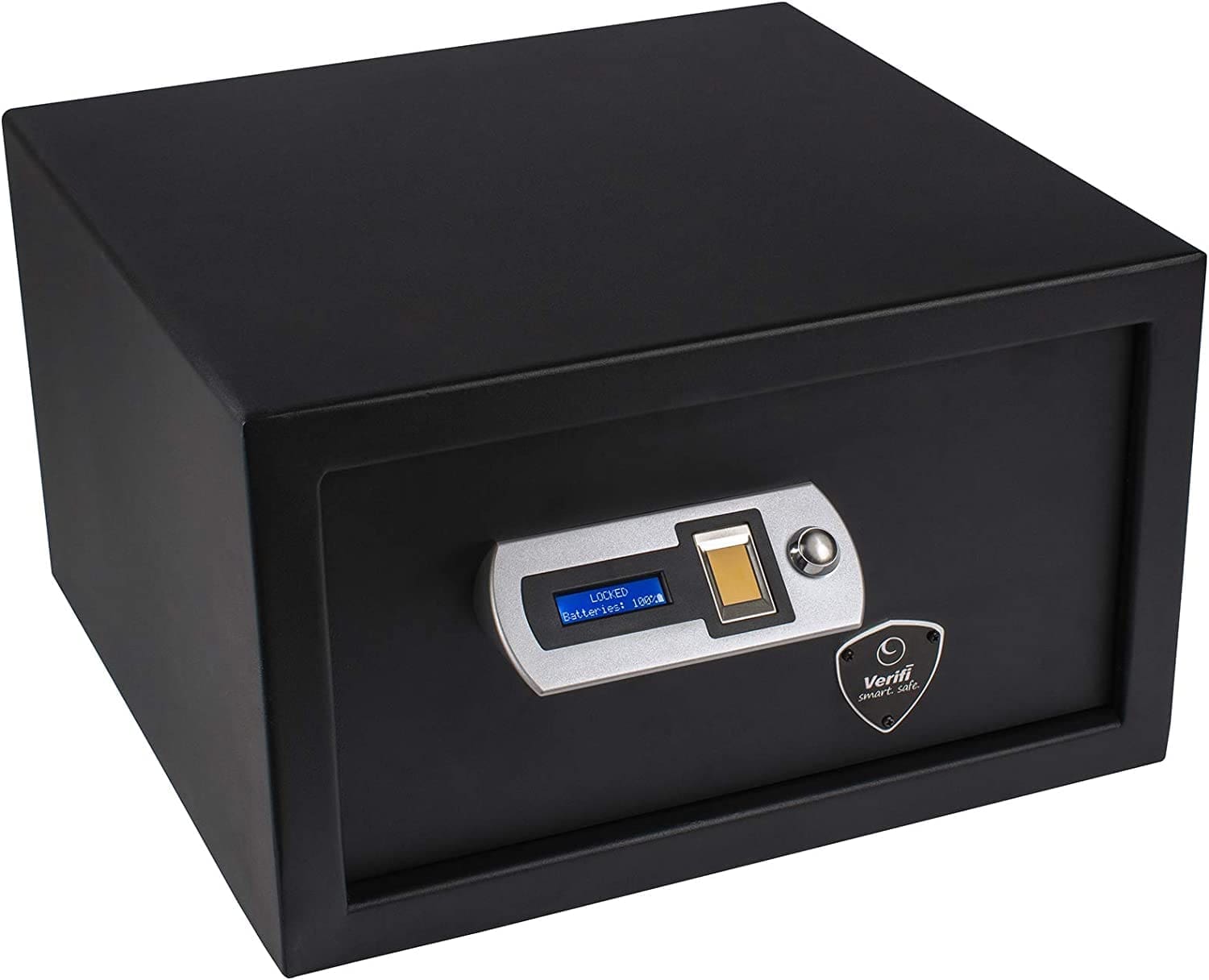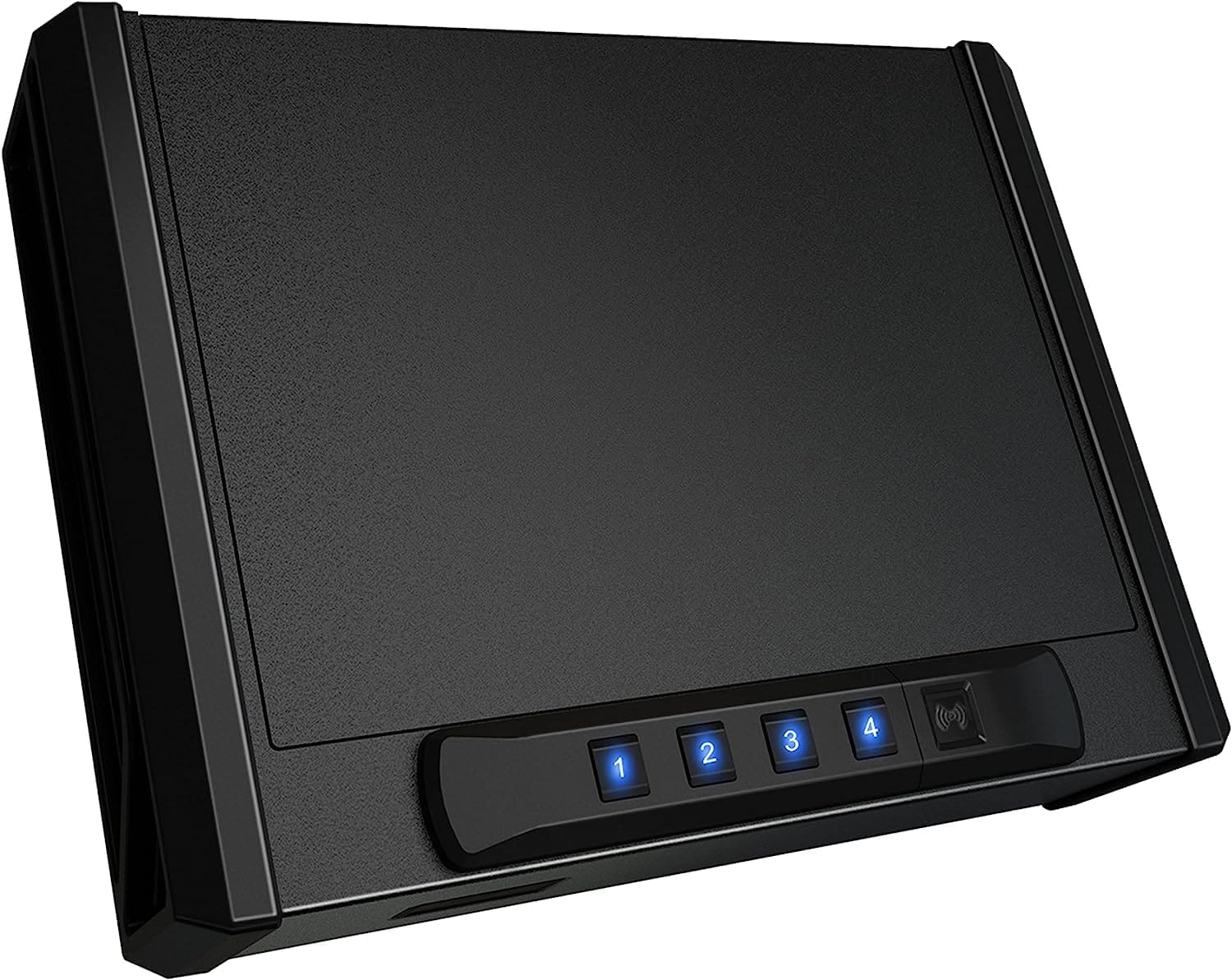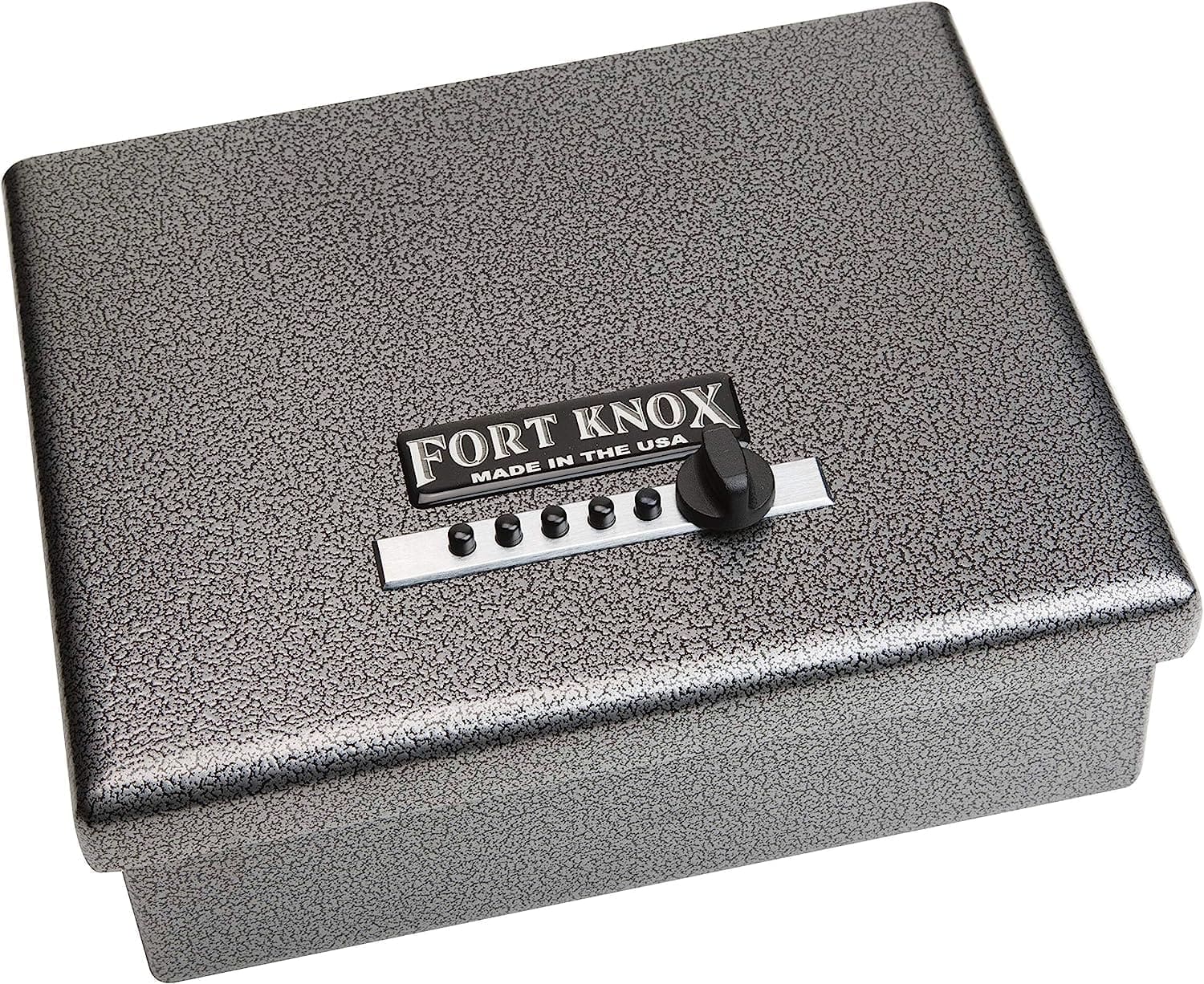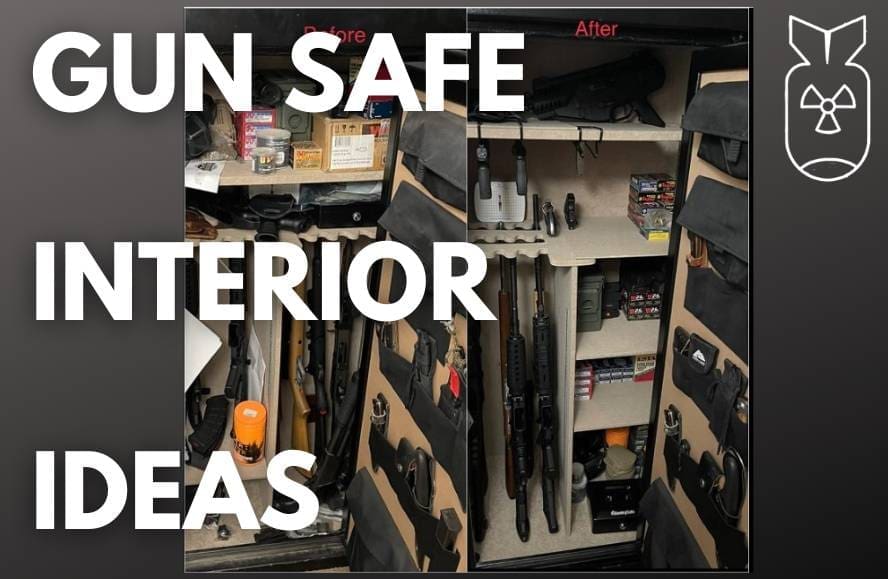In this article, we’ll be exploring the distinct differences between three popular locking methods used to secure and access gun safes: biometric, electronic, and mechanical.
Gun Safe Lock Types
Let’s explore the three main lock types used in gun safes and go over their differences, advantages, and disadvantages.
Biometric Gun Safes
Biometric gun safes, also known as fingerprint safes, utilize advanced biometric technology to provide secure access to your firearms.


These safes use unique physiological or behavioral characteristics, such as fingerprints, to verify the user’s identity and grant access.
Here are the key features and benefits of biometric gun safes:
Biometric Technology
Biometric gun safes are equipped with biometric scanners that can read and store fingerprints. When a registered user places their finger on the scanner, the safe’s locking mechanism is released, granting immediate access.
Quick and Convenient Access
One of the primary advantages of biometric safes is their rapid access time. Another aspect of their convenience comes from several means of access.
Most biometric gun safes offer electronic keypads as a secondary means of entry, making them digital safes as well (they also have backup key redundancies built-in).
Multiple User Registration
Most biometric safes allow multiple users to register their fingerprints, making it suitable for households with several firearm owners.
No Need for Memorizing Codes or Keys
Unlike electronic or mechanical safes, there is no need to remember a combination code or keep track of a physical key. This eliminates the risk of forgetting the code or misplacing the key.
Enhanced Security Features
Biometric safes often come equipped with additional security features, such as anti-tamper mechanisms and alerts that activate when unauthorized access attempts are made.
However, while biometric safes offer numerous advantages, they are not without their drawbacks:
Reliability Concerns
The reliability of biometric technology has significantly improved over the years, but there can still be instances of misreads or failures to recognize registered fingerprints.
Factors like dirt, moisture, or changes in finger condition can impact the accuracy of the scan.
Power Dependency
Biometric safes require a power source to operate the fingerprint scanner and locking mechanism. In case of a power outage or a dead battery, alternative means of access should be available.
Cost
Biometric gun safes tend to be more expensive than their electronic or mechanical counterparts due to the advanced technology involved.
Key Takeaways:
Biometric gun safes provide fast and convenient access, making them an excellent choice for self-defense scenarios.
However, potential reliability issues and higher costs may deter some gun owners from choosing this option.
Electronic Gun Safes
Electronic gun safes, also known as digital safes, are a popular choice for gun owners seeking a balance between security and accessibility.
These safes utilize an electronic keypad to grant access, requiring users to input a pre-programmed combination code.


There are also electronic safes with RFID chips installed that give you lightning-fast access via a key fob, sticker puck, or wrist strap.
These safes will also have electronic keypad access as well and some may even have Bluetooth access via an app that you install on your smartphone.
These are known as “Smart Safes” and command higher prices for the amount of extra technology and convenience built into them.
Let’s explore the key features and benefits of electronic gun safes:
Keypad Access
Electronic gun safes are equipped with a digital keypad that allows users to input a combination code. This code can be easily changed whenever necessary.
They may also be equipped with an RFID chip, Bluetooth entry, or both, and most have backup key entry just in case the batteries were to fail.
Quick Access
Similar to biometric safes, electronic safes offer relatively quick access to firearms. By entering the correct combination, the locking mechanism is released.
Multiple User Access
Many electronic safes support multiple user codes, enabling several authorized individuals to access the safe.
Backup Key Options
To ensure access in case of forgotten codes or keypad malfunctions, electronic safes often come with backup keys that can manually override the electronic lock.
Tamper Alerts
Higher option electronic safes may include tamper alerts that activate if unauthorized access attempts are made, deterring potential intruders.
Electronic gun safes also have some disadvantages to consider:
Vulnerable to EMP Attacks
Should our enemies ever decide to kick off WW3, electronic safes can be left vulnerable to electromagnetic pulse (EMP) attacks, which could potentially disable the electronic components.
Batteries and Power Sources
Electronic safes, like biometric safes, rely on batteries or an external power source. Regularly checking and replacing batteries is crucial to ensure uninterrupted access.
Lifespan of Electronic Components
Over time, electronic components may wear out or become less reliable, requiring maintenance or replacement.
Key Takeaways:
Electronic gun safes offer a balance of security and accessibility, making them suitable for various firearm owners.
However, the potential vulnerability to EMP attacks (however unlikely) and reliance on batteries may cause concern for some users.
Mechanical Gun Safes
Mechanical gun safes with turn dial combination locks are the traditional type of safes that have been used for centuries.
They utilize mechanical locking mechanisms based on combination dials or wheels, but some modern designs have mechanical push-button Simplex locks that are keyless and require no batteries (shown below).


Here are the key features and benefits of mechanical gun safes:
Durable and Time-Tested
Mechanical safes have a reputation for their durability and reliability. The combination lock design has been proven effective over many years.
No Power Source Needed
Unlike biometric and electronic safes, mechanical safes do not require batteries or external power to operate. This makes them immune to power outages and EMP attacks.
Limited Vulnerabilities
Mechanical safes have fewer electronic or technological vulnerabilities, reducing the risk of potential malfunctions or tampering.
Can Be Very Expensive
Compared to biometric and some electronic safes, mechanical safes are generally more expensive (unless we’re talking about the rinky-dink safe boxes out there).
Combination locks are primarily found on gun safes that have UL ratings for burglary, fire, and water. (The exception is the more reasonably-priced Fort Knox safes with Simplex push-button locks.)
However, mechanical safes also have some limitations to be aware of:
Slower Access
The process of unlocking a mechanical safe through the combination dial or wheels can be slower compared to electronic or biometric safes. This may not be ideal in urgent situations.
Memorization of Combination
Users must memorize the combination or keep it written down in a secure place. Forgetting the combination or losing the written code can result in difficulty accessing the safe.
Single User Access
Most mechanical safes only allow a single combination, limiting access to one user or a few trusted individuals. Also, changing the combination may require professional assistance.
Precision in Dialing
To ensure proper access, the combination must be dialed with precision. Rushing or making errors can lead to failed attempts.
Key Takeaways:
Mechanical gun safes offer a time-tested and cost-effective solution for secure firearm storage.
Their durability and resistance to electronic vulnerabilities make them a reliable option for gun owners seeking a more traditional approach to security.
Choosing the Right Gun Safe for You
After understanding the differences between biometric, electronic, and mechanical gun safes, the decision-making process becomes more manageable.
Each type of safe offers its unique advantages and drawbacks, so selecting the right one largely depends on your specific needs and preferences.
Biometric Safe Pros:
- Ideal for quick and convenient access during emergencies.
- Suitable for households with multiple firearm owners due to multiple user registrations.
- Considered a premium option for those willing to invest in cutting-edge technology.
Electronic Safe Pros:
- Strike a balance between security and accessibility.
- Suitable for multiple users with individual access codes.
- Offer quick access without the need for physical keys.
Mechanical Safes Pros:
- Offer durability and a time-tested locking mechanism.
- No reliance on batteries or external power sources.
- Cost-effective option for budget-conscious gun owners.
Ultimately, the security of your firearms and the safety of those around you should be the top priority.
It is recommended to purchase a gun safe from reputable manufacturers with a proven track record of producing high-quality, secure safes.
Additionally, check for any certifications or ratings that signify the safe’s level of security, such as UL (Underwriters Laboratories) ratings for fire and theft protection.
Before making a purchase, carefully evaluate your specific requirements, the number of firearms you own, and the space available for the safe’s installation.
Also, consider any future firearm acquisitions or changes in your collection that may influence the size and capacity of the safe you need.
Final Thoughts
Gun safes of any type can prove to be a reliable and effective solution for preventing unauthorized access, reducing the risk of accidents, and safeguarding firearms from theft or damage.
As discussed, biometric, electronic, and mechanical gun safes each offer distinct advantages and considerations that need to be taken into account.
Biometric safes provide quick access through advanced fingerprint scanning technology, but they can be susceptible to reliability concerns and require a power source.
Electronic safes offer a balance between security and accessibility, but they may be vulnerable to EMP attacks and require regular battery maintenance.
Mechanical safes, on the other hand, boast a durable and time-tested design with no reliance on batteries, but they may be slower to access and limit multiple user registrations.
Choosing the right gun safe will largely depend on how you plan to use it, your budget, and your preferences (remember to consider factors such as security level, size, accessibility, fire protection, and location when making your decision).
Investing in the right type of gun safe for your needs, you can enjoy peace of mind knowing that your firearms are secure, accessible when needed, and out of reach of children.



